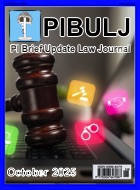Tom Clark v Omar Elbana [2025] EWCA Civ 776 - Andrew Ratomski, Temple Garden Chambers

18/07/25. Date of judgment: 24 June 2025.
This sports negligence claim arises from a collision between the Defendant, and now Appellant, and the Claimant during an amateur rugby match. The Claimant suffered a serious spinal injury. Causation was conceded but the issue of breach of duty went to trial.
Permission to appeal was granted concerning the test to be applied to the Appellant’s alleged recklessness, adequacy of reasons, the relevant legal test when determining breach of duty in a sporting context and in regards the judge’s conclusions that the Appellant was reckless in the circumstances of a game of rugby.
The appeal was dismissed in short order on the basis of the Respondent’s Notice dated 9 April 2025 filed by the Claimant (Respondent to the appeal). The Claimant argued that in the sporting context the legal test in negligence was whether the Defendant had failed to exercise such degree of care as was appropriate and by reference to the evidence before the Judge, the Defendant was reckless which was a higher, more stringent legal test. It was further argued that it could not possibly be said that the Defendant was not negligent by reference to the same evidence before the trial judge.
At the hearing, the Defendant’s counsel was invited to address the issues raised in the Respondent’s Notice before the Court of Appeal indicated that it was satisfied that the Judge’s finding that the Defendant was reckless encompassed a finding of negligence. The Court also considered that finding was not erroneous and the Respondent’s Notice was in effect correct. It therefore followed that the appeal would be dismissed.
The case was brought on the basis that the index collision was unnecessary and negligently made by the Defendant with reckless disregard for the Claimant’s safety, all contrary to the laws of rugby. There was available a clear video recording of the collision and the Judge made numerous factual findings based on what the video purported to show.
The Court of Appeal considered the laws of ruby set by World Rugby and the prohibition under law 10.4(f) of playing an opponent without a ball. The Court of Appeal explained that the claim was brought in the tort of negligence. In this context, reckless was used as an adjective but recklessness was not required to establish negligence as the sporting authorities made clear. It followed that describing a play as “reckless” in a sporting context was a higher, more stringent test that encompassed a finding of negligence.
The Court of Appeal also rejected the Appellant’s arguments that the Judge had failed to address the issue of foreseeability and found the risk of injury was a significant one, it was courting at least a fracture which was a serious injury:
“The judge’s findings that the defendant ran directly at the claimant at full speed and in choosing to run so close to the claimant, the defendant was courting the risk that even a slight movement would result in a forcible contact with most of the kinetic energy being transferred to the claimant encapsulated the factual basis of foreseeability.”
The Court of Appeal also held that whilst the Judge did not use the word “negligent”, that was the pleaded basis of the claim and it was upon the pleaded claim that liability was found.
Discussion
This case illustrates the impact a well-crafted Respondent’s Notice can have, especially one that is grounded in the factual findings a trial has made. It is also essential reading for practitioners working on sports injury claims and wrestling with the line between play that is reckless versus negligent or the ingredients of foreseeability in sports injuries.
https://caselaw.nationalarchives.gov.uk/ewca/civ/2025/776
Image ©iStockphoto.com/Kolbz












![Appeal judge rules that credit hire company has no costs liability following a finding of fundamental dishonesty in personal injury case: RSA v. Fastrack Solutions Limited [2023] 4 WLUK 92 - David Bowden, Erimus Chambers](/content/images/resized/images/stories/carkeys_72_72.jpg)


